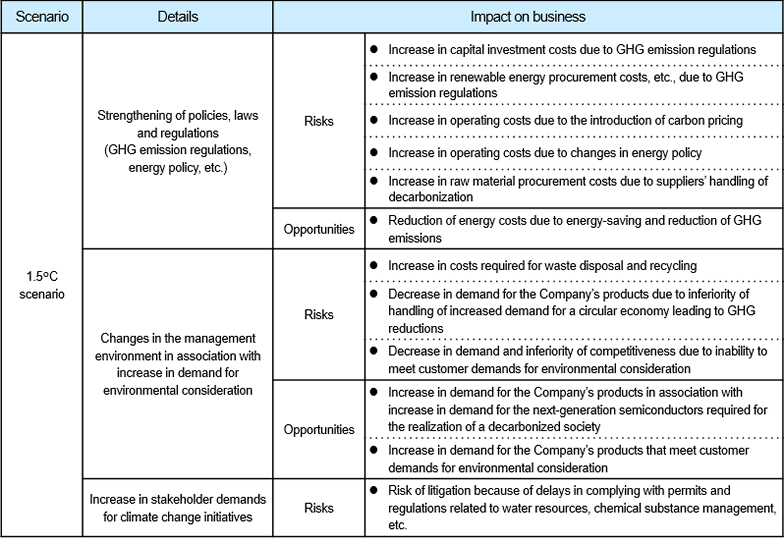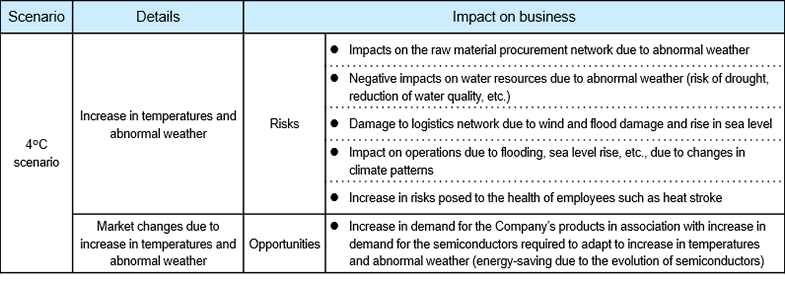Strategy
As the world as a whole continues to take on the challenge of decarbonization, businesses are faced with great uncertainty.
The Company implemented the scenario analysis required by the TCFD recommendations to verify the resilience of management in regard to that uncertainty.
In implementing this scenario analysis, we analyzed the future anticipated risks and opportunities for the Company under two scenarios: a “1.5°C scenario” in which the impacts of transition risks and opportunities are prominent; and a “4°C scenario” in which the physical impacts due to the average increase in temperature are prominent, based on the climate change scenarios published by the International Energy Agency (IEA) and the Intergovernmental Panel on Climate Change (IPCC).
From now on, we will further deepen and review our scenario analysis, and work on the formulation of a transition plan to decarbonization, whose disclosure is required under the revised TCFD guidance and International Sustainability Standards Board (ISSB).
Referenced Scenarios
- ※1The scenario in the case where the countermeasures required to limit temperature increase to 1.5°C or less compared to pre-industrial revolution levels are taken
- ※2The scenario in the case where global average temperatures rise by 4°C at the end of the 21st century compared to pre-industrial revolution levels
- ※3International Energy Agency “World Energy Outlook” (2022)
- ※4International Energy Agency “Energy Technology Perspectives” (2023)
- ※5UN Intergovernmental Panel on Climate Change (IPCC), “Shared Socio-economic Pathway”
- ※6“Net Zero Emissions 2050” Achievement of net zero emissions in 2050, temperature increase of 1.5°C in 2100
- ※7“Announced Pledges Scenario” Governments achieve all the climate‐related commitments that they have announced, temperature increase of 2.1°C in 2100
- ※8“Stated Policies Scenario” Consistent with NDC as of June 2021, temperature increase of 2.6°C in 2100









